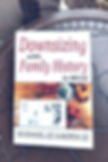5 Systems for Organizing Genealogy Paper Files
- Devon Noel Lee
- Oct 6, 2020
- 3 min read
Updated: Nov 23, 2024

Piles of files of genealogy documents, notes, photos, and reference guides may clutter your workspace. Unfortunately, the longer your desk, dinner table, or den remains disorganized, the less progress you'll make on your genealogy research.
Let's change that, shall we?
Why Are Genealogy Filing Systems a Necessity in Family History Research?
Putting your hand on what you want when you need it is critical for efficiency in research. Why waste 15 minutes of precious tree climbing time because you can’t find the document you know has the birthdate for your 3rd great-grandmother?
Additionally, suppose you’re working on any genealogy brick wall. If your research isn’t organized, you are likely overlooking clues that could open up crucial gaps in your investigation.
Finally, it will likely go up in flames if you don't organize your genealogy. You know you have relatives just itching to take your research and have a bonfire.
Get your free guide, Preserving the Perishable, to help save your most precious genealogy documents, photos, and more.
Learn more about the genealogy filing systems.
5 Filing Systems to Organize Your Genealogy Records
Alphabetize Individuals: Consider how a doctor's office organizes files; you will understand this method. Each individual has a separate folder. All documents, notes, and relevant reference materials are dropped into these files. The files are arranged alphabetically, first by surname and then by first name.
Arrange by Marriage Units: This method organizes paper files into folders for a married couple. Once a couple marries, any document created about them or their children drops into these files. The Genealogy Research Associates explain how to implement this system using a marriage unit ID. While I dislike organizing by ID numbers rather than surnames, I often gravitate to this system.
Four-Color Coding Filing System: This method takes the marriage unit system and color codes it. The Folder Marker Blog and Pictures and Stories website explain how to implement the system. I take the color-coding system up a notch and utilize the colors to organize my DNA matches on Ancestry. Click this link to learn more: Color Code Your DNA matches.
Arrange by Record Type: Methods 2 and 3 lead to many duplicate record files as individuals may connect in multiple family units. Therefore, another option involves filing documents by record type (birth certificates, death certificates, probate records). Then, documents are filed alphabetically in the record type folder by surname. I take this system up a notch and separate the papers into my maternal and paternal branches. Then, I file everything by record type.
Arrange by Location: Not every resource and project fits nicely into family units or record types. Another option for filing your documents involves sorting by location. Amy Johnson Crow often discusses how she organizes in this fashion. You separate all files by location and then by record type or resource.
If Your Genealogy Research is Important, It Should be Organized
If you leave your heirs a disorganized mess, they usually don't have the luxury of keeping your home for two years and sifting through everything. In many cases, myself included, they have six months or less. In fact, I spent half a day at my mom's apartment.
If you need an action plan to save more by keeping less, order by book Downsizing With Family History in Mind from Amazon. You'll receive action plans, cheat sheets, and encouragement.
If you leave a mess, your genealogy researcher is more likely to be thrown out or burned for fuel.
Are you scared enough now to take action?

.png)
